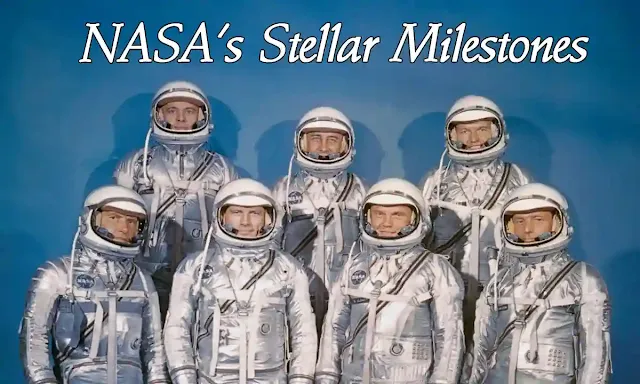NASA's Stellar Milestones: A Journey Through Space and Time
1. The Dawn of Space Exploration: Mercury and Gemini Programs
NASA's journey began with the Mercury program in 1958, which aimed to send the first Americans into space. In 1961, Alan Shepard became the first American in space aboard Freedom 7. This was followed by the Gemini program, which developed crucial spaceflight techniques like spacewalks and orbital rendezvous, setting the stage for the Apollo missions
2. One Giant Leap: Apollo 11 Moon Landing
Perhaps NASA's most iconic achievement came on July 20, 1969, when Apollo 11 astronauts Neil Armstrong and Buzz Aldrin became the first humans to set foot on the Moon. Armstrong's famous words, "That's one small step for man, one giant leap for mankind," marked a monumental moment in human history, demonstrating what humanity could achieve when united by a common goal.
3. Exploring Beyond: The Voyager Missions
Launched in 1977, the Voyager 1 and Voyager 2 spacecraft were designed to explore the outer planets. They provided the first close-up images of Jupiter, Saturn, Uranus, and Neptune. In 2012, Voyager 1 became the first human-made object to enter interstellar space, continuing to send back data from beyond our solar system.
4. A Permanent Presence in Space: The International Space Station
Since the launch of its first module in 1998, the International Space Station (ISS) has become a symbol of international cooperation and a hub for scientific research in microgravity. NASA's involvement in the ISS has provided invaluable insights into long-duration spaceflight, essential for future missions to Mars and beyond.
5. Red Planet Bound: Mars Rovers and Beyond
NASA's fascination with Mars has led to a series of successful rover missions, beginning with Sojourner in 1997, followed by Spirit and Opportunity, and more recently, Curiosity and Perseverance. These rovers have uncovered evidence of water, studied the planet's geology, and even tested the first oxygen production from the Martian atmosphere, paving the way for future human exploration.
6. Peering into the Cosmos: The Hubble Space Telescope
Launched in 1990, the Hubble Space Telescope has revolutionized our understanding of the universe. It has captured stunning images of distant galaxies, nebulae, and supernovas, and has helped scientists measure the rate of the universe's expansion. Hubble's discoveries continue to shape our knowledge of the cosmos.
7. Preparing for the Next Giant Leap: Artemis Program
NASA's Artemis program aims to return humans to the Moon by 2025, with the goal of establishing a sustainable presence and eventually sending astronauts to Mars. The program represents the next chapter in human space exploration, building on the legacy of Apollo while incorporating modern technology and international partnerships.
Conclusion: NASA's Unyielding Spirit
NASA's milestones are a testament to human ingenuity, perseverance, and the unyielding desire to explore the unknown. As we look to the future, with plans to return to the Moon, explore Mars, and send probes even further into space, NASA continues to inspire generations to reach for the stars and beyond.
These achievements are not just milestones in space exploration; they are chapters in the story of humanity's quest to understand our place in the universe. NASA's journey is far from over, and the best is yet to come.


Post a Comment